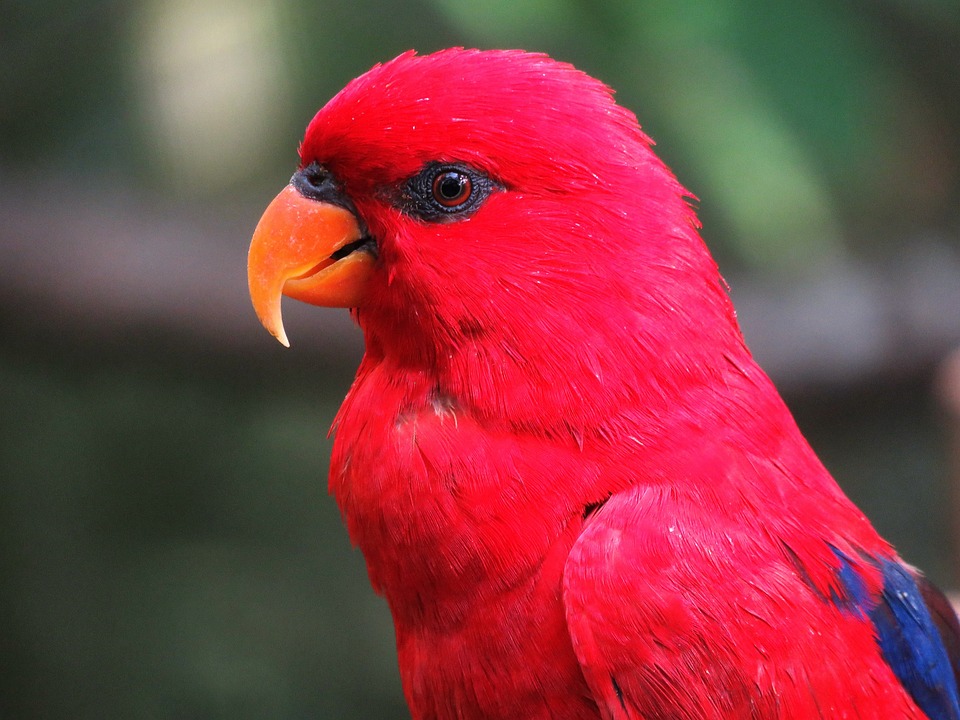Parrot training is an exciting journey that allows you to bond with your feathered friend and enhance their cognitive abilities. To make the most of this training experience, it is crucial to recognize signs of curiosity and eagerness to explore in your parrot. These signs will help you gauge their engagement and adjust your training methods accordingly. In this article, we will explore various indicators of curiosity and eagerness in parrots, empowering you to become a more successful trainer.
One of the first signs of curiosity and eagerness in parrots is their posture and body language. When a parrot is engaged and excited, they will exhibit an upright stance with their feathers sleeked back. Their pupils may also dilate, and their tail feathers may fan out. Additionally, an erected crest or feathers on the back of the head may indicate heightened curiosity and interest.
Vocalizations are another important indicator of a parrot’s curiosity and eagerness. When a parrot is excited and engaged, they may chirp, whistle, or mimic sounds. The volume and intensity of their vocalizations may increase, and their enunciation may become clear and distinct.
Focused attention is another key sign of curiosity in parrots. When a parrot is eager to learn and explore, they will maintain direct eye contact with the trainer. They may also cock their head sideways to listen attentively and display stillness, indicating a lack of distractions.
Active movement is also a clear sign of curiosity and eagerness in parrots. An engaged parrot will eagerly approach the trainer or the training area. They may exhibit rapid wing flapping or hop in place out of excitement. Exploring the environment with curiosity is another indication of their eagerness to learn and discover.
Playfulness is yet another sign of curiosity and eagerness in parrots. Engaging in interactive games or toys, initiating physical contact by gently nibbling or preening, and performing tricks or behaviors previously learned are all indications of an enthusiastic and curious parrot.
Now, let’s answer some frequently asked questions about recognizing signs of curiosity and eagerness in parrots during training.
Q1: How long does it take for a parrot to show signs of curiosity during training?
The time it takes for a parrot to exhibit signs of curiosity varies from bird to bird. Some parrots may show curiosity immediately, while others may take a few training sessions to warm up. Patience and consistency are key.
Q2: What if my parrot does not exhibit any signs of curiosity?
If your parrot appears disinterested or unresponsive during training, it is essential to assess the training environment and your training techniques. Ensure that the surroundings are free from distractions and that you are using positive reinforcement methods to motivate your parrot.
Q3: Can parrots lose interest in training over time?
Parrots, like any other animals, may experience periods of disinterest or boredom. To prevent this, it is crucial to keep training sessions varied, engaging, and short to maintain your parrot’s attention and enthusiasm.
Q4: How can I encourage my parrot’s curiosity and eagerness during training?
You can stimulate curiosity and eagerness by introducing novel toys, puzzles, or challenges during training sessions. Additionally, positive reinforcement, such as treats and praise, helps to reinforce desired behaviors and motivate your parrot to actively participate.
Q5: Are there any specific parrot breeds that are more curious and eager to explore?
While individual personalities can vary within parrot breeds, certain species, such as African Greys, Amazons, and Cockatoos, are generally known for their inquisitive nature and eagerness to explore. However, it is essential to remember that each parrot is unique, and their level of curiosity may differ.
In conclusion, recognizing signs of curiosity and eagerness in your parrot during training is vital for building a successful training routine. By observing their body language, vocalizations, attention, movement, and playfulness, you can adjust your training techniques accordingly and create a stimulating environment for your feathered companion. Remember to be patient, consistent, and always celebrate your parrot’s progress. Happy training!









